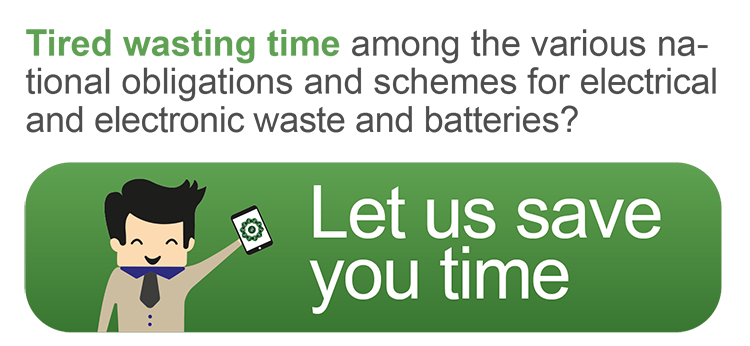WEEE stands for "Waste Electrical and Electronic Equipment", but what does it cover actually? Let's go more precisely what is included in WEEE...
Born to be a waste...
The Waste Electrical and Electronic Equipment (WEEE) directive introduced new responsibilities for businesses selling and/or using Electrical and Electronic Equipment (EEE). The WEEE directive was first published in 2002 and has been updated in 2012.
The WEEE directive lists categories of equipment, the EEE, that will become waste the day their owner will decide to get rid of it. This legal framework defines targets and stands to organize the administration, the finances, the collection and recycling of the WEEE in all the European countries.
The EEE that will become one day WEEE are listed in the regulation. Therefore, producers (manufacturers, importers, distant-sellers, distributors and retailers) shall take into account the scope of EEE concerned by the WEEE directive, when placing EEE on the market.
So what is WEEE?
11 categories of WEEE (to rule them all)
In fact, WEEE covers everything that require an electric current, a battery, or solar energy in order to operate. They are categorized into 10 differents groups regarding their industrial sectors or their components:
- Large household appliances
- Refrigerators and freezers, airconditioning equipment, heating pumps, dishwashers, laundry, hovens, cookers, radiators, etc.
- Small household appliances
- Vacuum cleaners, cooking equipment, microwaves, care equipment, cleaning equipment, sewing equipment, etc.
- IT and telecommunications equipments
- Desktops, PCs, tablets, phones, printers, servers, copying equipment, monitors, telecommunication equipments, etc.
- Consumer equipment
- TVs, Hifi, video, musical instruments, etc.
- Lighting equipment
- Fluorescent lamps, sodium lamps, other lighting equipment, etc.
- Electrical and electronic tools
- Drills, Do It Yourself equipment, saws, mowing and gardening equipment, etc.
- Toys, leisure and sports equipment
- Video games consoles, sports equipment, coins slot and casino machines, toys, etc.
- Medical devices
- Radiotherapy, cardiology and dialysis equipment, other medical equipment (labelled).
- Monitoring and control equipment
- Smoke detector, thermostat, measuring equipment and other control instruments.
- Automatic dispensers
- Food, beverage and solid product distributor.
- Photovoltaic panels
The above list (excl cat.11) was published in the first WEEE directive (2002/96/EU) and is still applicable until the 14th August 2018 (according to the new WEEE directive 2012/19/EU - Annex I, article 2). This new WEEE directive officially states new categories from the 15th of August (Article 2.1.B and Annex III of directive 2012/19/EU):
- Temperature exchange equipment
- Screens, monitors and equipment containing screens (>100cm2)
- Lamps
- Large equipment
- Small equipment
- Small IT and telecommunication equipment
This change of categories should enable producers, compliance and take-back schemes, Producers Responsibility Organisation (PRO), and authorities to easily manage administrative declarations and reportings.
(other sources: Wikipedia and Ec.Europa.eu)
... waste to be reused, recycled and recovered
The day the EEE becomes a WEEE is the day the owner disposes of it. The WEEE shall be disposed in a proper manner at the right collection site to be further either reused, or depolluted, recycled and recovered. Producers are obliged to organize such logistic and treatment, usually with the support of PRO.
Romain Letenneur




